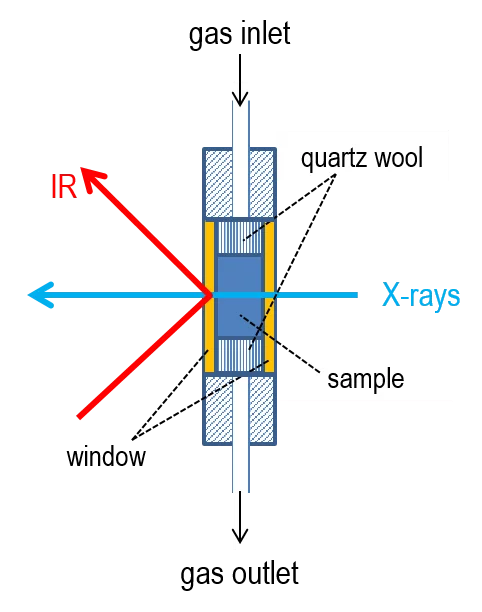In operando experiments the catalyst has to be analysed under reaction conditions while activity and selectivity are monitored simultaneously by analytical methods. Moreover, the reaction cell in which the investigation is carried out must behave as a catalytic reactor. In order to satisfy these requirements, suitable spectroscopic reactor cells must be employed. The cell developed by Chiarello et al. is available at the SuperXAS beamline for this purpose. This tool comprises a stainless steel body in which a rectangular aperture is cut in the middle as sample emplacement. Typically, the sample is closed between two optical windows and fixed firmly between two quartz wool plugs. The catalyst temperature is controlled by two heating cartridges installed on the sides of the sample and is monitored by a K-type thermocouple inserted in the catalyst bed. This ensures homogeneous heat distribution within the sample. Two stainless steel tubes allow for gas admittance through the bed.
The cell is designed to represent a plug flow reactor, has low void volume and is suitable for time-resolved XAS spectroscopy. It can be also used for IR (diffuse reflectance), XRD, PDF and XES. Moreover, both liquid and gas-phase experiments at a temperature up to 500 °C can be carried out.
These features make it a suitable candidate for operando investigations. The catalyst can be analysed under stationary conditions or perturbed by fast transients, while for example its electronic and surface structure is probed by the X-ray and infrared radiations in a real reactor-like environment.

For further information about the cell and practical experiments please refer to Chiarello et al. as well as Marchionni et al. or contact us.
